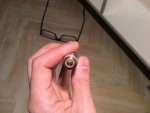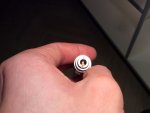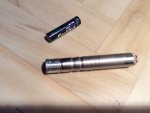Hi, i didn't know all that was required to fill it with nitrogen gas. I tought getting the gas, getting a ziplock back and fill it up and screw the lens on there and trapping nitrogen in there while the bag was closed. Air couldn't escape from the cavity. The sealing is hard and the 3 element lens is sealed with strong thin adhesive cut precisely at the diameter of the lens and rim. which is pressed in place with the retainer ring. The diode is epoxied where the 3 cutouts are on the diode substrate and sealed around the module and the diode can with sealing gel i got from an electrician/boiler mechanic. I sealed everything my self. Threads are sealed to with a ton of teflon and the gel at the end when its focused to infinity. There is no way air could escape. Maybe after 6 years but absolutely not now
It could easily handle presure diferential, it could handle vacuum too for a long time. Altough i don't want it be vacuum as it puts more unnecessary strain. I tough you meant facuuming it and then seal it
Hi, i tried a ziplock bag and a desiccant bag. By drying the air inside and then sealing it off while dry air is inside. Altough, do you know how long it takes to dry air inside a nearly flattened ziplock back? I think this is by far the best way to get dry air inside my 100mm long pointer.
I also want to use this as laser sight for airsoft soon, i can't have it to condensate. The humidity here is terrible
Anyways both thanks for the inputs!
I don't think you are explaining problem accurately. Is this item seal or not?
Last edited:









